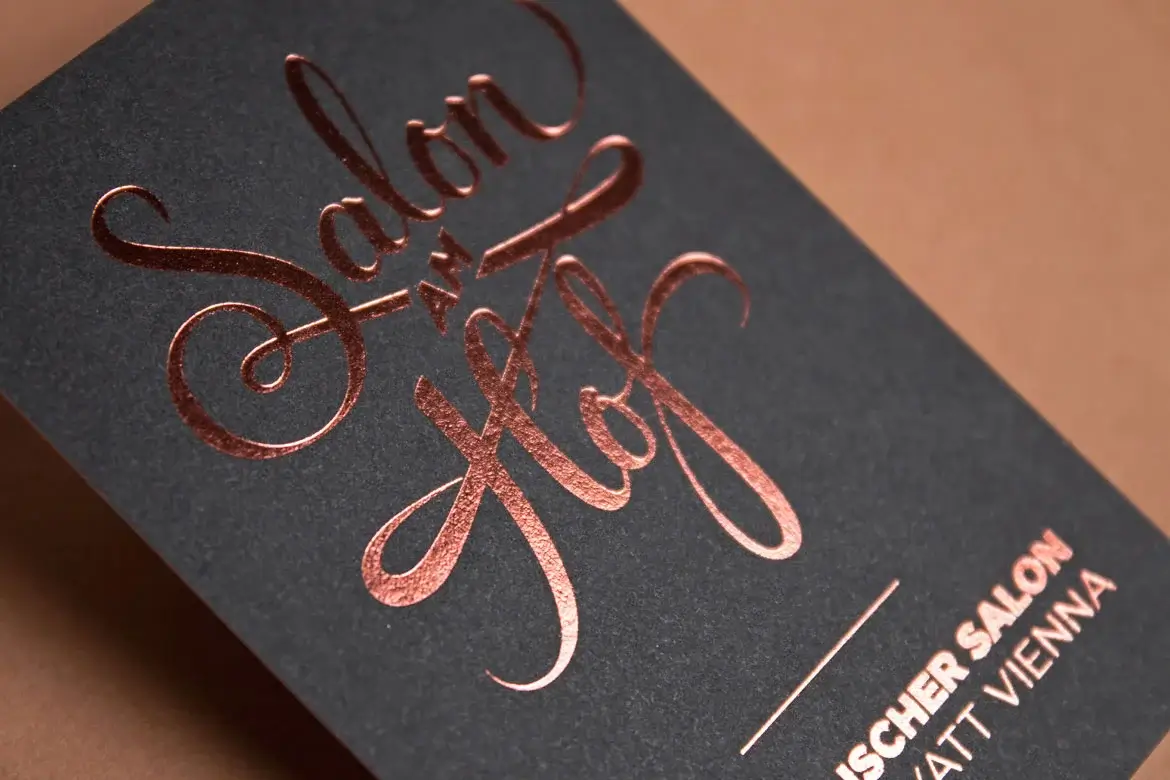Foil stamping which is a specialised printing process adds a premium design to packaging materials. The process involves a hot die being applied onto the foil making it stick to the surface underneath which is in the shape of the die. This method is predominantly used in package design to enrich the visuals and the perceived value of products. This is a step-by-step description of tint embossing in packaging from A to Z, including materials and techniques. It’s suitable for UK usage.
Process Foil Stamping
Foil stamping origins from the making of a metal die and engraving of it with the preferred pattern. The subsequently heated die is stamped on the foil layer that is laid over the substrate (the packaging material). The combination of temperature, pressure and sometimes dwell time (which is the time for which the die is held against the foil and substrate) creates the foil to have sticky interaction with the substrate which matches well to the die structure. The excessive foil is then removed leaving the design on the packaging.
Materials
Foil Stamping :
Foil stamping is a versatile way to incorporate different eye-catching visual elements to numerous products. Foil stamping can come in varying forms giving the option of various finishes to fit different styles.
One kind of foil is metallic, that gives a glittery and reflective appearance which brings a sense of sophistication and luxury to the design. Another alternative is pigmented foil that provides either a matt or a gloss finish without the metallic lustre, thereby satisfying various desired appearances. Also, holographic foils can be used by individuals preferring a three-dimensional and prismatic effect which creates a visual impact that captures the attention.
The kind of foil chosen depends on the particular aesthetic result wanted by the designer or brand. Whether it’s a luxurious shinny, a subtle matte or glossy finish or an innovative holographic effect, the variety of foils offers creative expression through foil stamping.
Substrate:
Foil stamping is a versatile process that can be applied to a variety of substrates, like paper, cardboard packaging, plastic and leather. The choice of substrate is governed by the required appearance and comfort of the packaging as well as the functionality requirements for strength and protection.
Paper is preferably used for custom packaging products such as cosmetics because of its feathery and workable aspect. Cardboard can in fact be used for an item that requires a more durable packaging such as for cases of electronic gadgets and some luxury goods.
A premium and luxurious feel is conferred to the packaging when the leather substrates are used. Typically, leather is also the most preferred choice of high-end fashion items or deluxe gift boxes. The differences of each substrate make them suitable for different applications in foil stamping; it is an option to the designers which allows them to customise their packaging according to the product need and branding objectives.
Die and Packaging Materials:
Foil stamping dies are often made of metals like brass, copper and magnesium because of their durability and conductive power to heat. The type of metal is dependent on the particulars of the foil stamping job. For instance, brass is usually applied to jobs with long production runs or complex designs, which is due to its ability to preserve complex details. Copper also is widely used to make stamping dies, it has high thermal conductivity and wear resistance.
It is also true that the magnesium die is preferred for shorter production runs as it has the advantage of being cost efficient at the same time. Besides, the metal has a lightweight nature which translates to ease of handling during the foiling process.
From the point of view of the die material selection, high-quality foil stamping outcomes can be achieved while enhancing the production efficiency. It is vital for manufacturers to evaluate their peculiar needs and take into account details like design complexity and production run length in picking the right metal for their foil stamping die.
Applications in Packaging
Foil stamping is used in different package applications for a quality feel.Common uses include:
- Cosmetics and Perfumes: Packaging for these products often involves the use of foil stamping which is a method that is used to create a stylish and premium look.
- Food and Beverages: Upper class kinds of food and wines can be stamped with foil font and food packaging boxes which makes them easy to identify on the shelf and suggest pristineness.
- Consumer Electronics: Foil stamping can on the goods and retail packaging be applied for to create a chic modern appearance.
- Books and Stationery: Some of the limited edition books, diaries as well as top-notch stationery have the foil-stamp designs that are used to give them an elegant look.
Advantages
Visual Appeal: Foil stamping beautifies packaging, thus, this makes goods more attractive to buyers.
Perceived Value: The luxurious nature of foil stamping boosts the presumed value of a product which in turn results in a higher retail price.
Versatility: Wide assortment of foils offers you a chance to create numerous stylish looks, appropriate for different products and brands.
Durability: Foil-stamped designs are resistant to fading and wear which allows packaging to retain its premium look over time.
Foil stamping is advantageous when decorating the packaging of products. Its eye catching is the important selling point as it can completely change the look of an item considering that consumers can buy or not the product looking at its packaging. Such an appealing feature helps in boosting sales by making products stand out in congested markets.
Foil stamping not only is a visual appeal but it also gives a product perceived value. Foil stamping has a luxurious and high-quality finish which signifies sophistication and class to support a higher selling price. Such increased value awareness affects customer buying choices and enhances business profitability.
Challenges
Cost: Foil stamping may be more expensive than other printing methods because of the cost of materials and equipment which is rather specialised.
Design Limitations: The procedure may not work for the greatest level of detail or very large designs due to limitations of die creation and stamping process itself. In the end, embossing and Debossing is a great technique in the packaging industry, providing a way to enhance product presentation. Through choosing appropriate materials and designs, brands can use this process to craft unique, high-quality packaging which is distinguishable in a competitive market niche.





